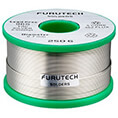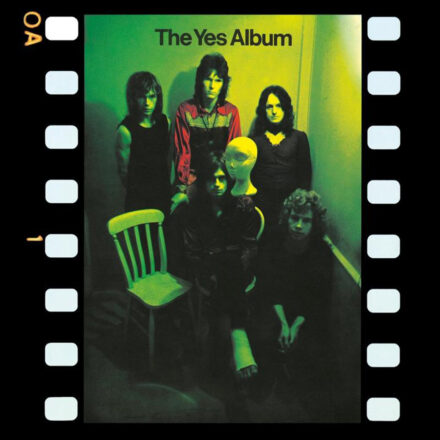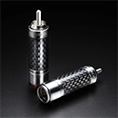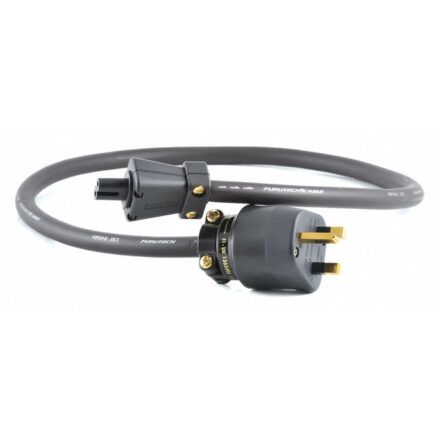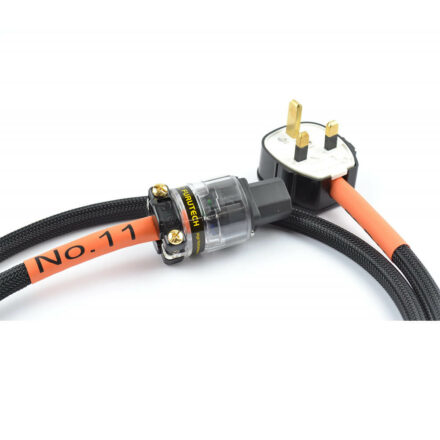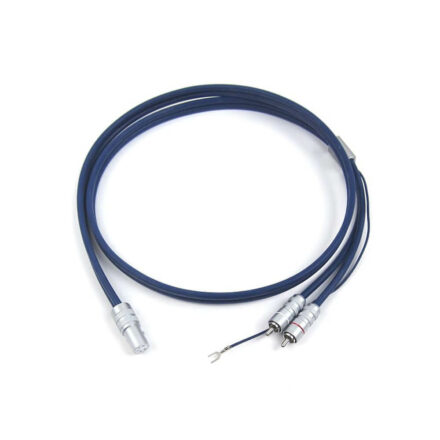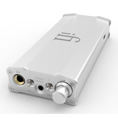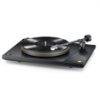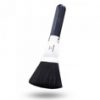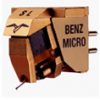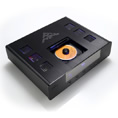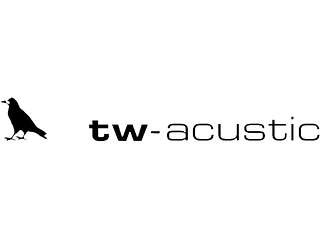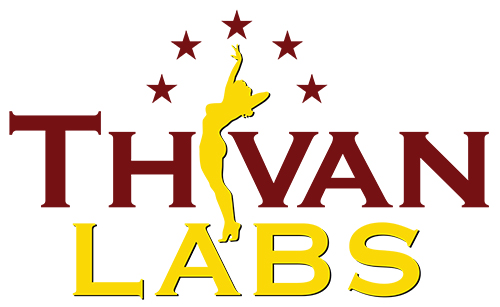Hand built to order, the Longdog Audio Valve Phono Amplifier has the ability to transform your enjoyment of vinyl onto a whole new level. If you are using a top end turntable then you simply must hear the LDA phono stage. Recently reviewed in HI-Fi World magazine and awarded 4 globes, all who have heard it remark how good it sounds. Built by a respected UK audiophile and engineer, the design is based on FET’s and valves. The review can be read here. Respected UK audiophile Tony Bolton remarked that the phono stage presented one of the largest sound stages ever experienced in his home.
Available initially as a moving coil only design but also available as moving magnet, the rear of the unit has loading sockets for the correct load to match your cartridge, these are supplied at order placement. The unit is available in silver or black and is supplied mounted on a set of RDC anti-resonance cones for optimum performance. If you are serious about extracting the maximum amount of information from the vinyl groove this phono stage is a must hear. On permanent demonstration in Huddersfield at Mains Cables R Us and in Somerset at South West Analogue.
To hear what your system is truly capable of, contact us now to arrange a demonstration, personal visits arranged or we can ship a demonstration unit to you.
The latest version of the Long Dog Audio Phono Amplifier is now available for purchase, it is a no compromise build which will bring out the best in your vinyl if you are using an MC cartridge. On demonstration in our Huddersfield premises or we can travel to see any customer who would like to listen to the phono stage in their own home.
This phono amplifier negates the need for step up transformers as these bring their own problems, the Revel phono stage has been engineered to get the maximum performance from any moving coil cartridge WITHOUT the need for a SUT.
Mains Cables R Us offer a valve phono stage to accompany your turntable, manufactured to a specification like no other, incorporating valves in the design has resulted in a rather special sounding phono stage, able to work with the very best turntables and built to order with black or silver casing.
The design has been auditioned by some of the most critical audiophiles with one commenting it is as good as or better than a rival design costing much more.
Please contact us for a demonstration if you are serious about your vinyl replay. We have a demo model available for audition in your own home.
Specifications
Overall gain 62dB at 1kHz
- Overload at 42v RMS output (40mv input)
- Frequency response within 0.25dB of RIAA (with 3.18us corner) from 20Hz to 20kHz
- Active loaded output driver provides low impedance output to preamp or integrated amp
- Choke power supply and shunt regulator per channel provides ultra low noise and stable power rails
- Direct input MC stage sutable for low output cartridges avoids the smearing and loss of detail associated with step up transformers (even the best ones)
- Single stage RIAA network employing zero loop feedback
- Selected components matched to within 0.1%
- Simple loading adjustment through RCA plugs loaded with resistor provides varying cartridge load.
- Good quality components used througout. Takman carbon and metal resistors, ICW Clarity Cap SA capacitors, JJ ECC88 and Philips 5687 triodes
The phono stage has a set of loading sockets on the rear for correct cartridge matching, we will supply 3 evaluation sets with each stage to allow you to choose the best one to suit your cartridge.
……………………………………………………………………………………………………………………………………………………………………………………………………………………………………………………………………………….
A little bit of the background of where the design for the MCj2 phono stage came from.
Its seems to be the case that valve phono stages seem to have the sonic edge over just about all solid state ones. Now while I have heard some very good solid state designs, they all seem have flaws, commonly splashy high frequency content and a general lack of dynamic range. The more costly examples are better, but not perfect. Both of these problems are very easy to avoid when using valve based designs. However like all things in engineering a solution to one problem brings its own new set of problems with it. The problem that valve phono stages have is noise. A typical valve phono stage with a ECC83 or similar in the first position is perfectly good for use with moving magnet or high output moving coil cartridges. But for use with low output moving coil the noise generated by the first valve (even using a selected low noise example) is more than is to be desired. There are some valves from the last days of valve design that can just about give a low enough noise level. But these are rare, and far from stable (the phrase, “they will oscillate in the box” describes some of them).
It is possible to reduce the noise level by the use of multiple paralleled devices, but that then adds power supply problems, and requires matched sets of valves for the best effect. So the normal solution to connect a low output moving coil cartridge to a valve phono amplifier is to use a step up transformer. These will commonly multiply the signal from the cartridge by 10 or 20 times, and the result of using a step up transformer into a valve phono stage can be very good indeed. But back to the inevitable compromise, the step up transformer brings its own problem, not least of which is cost, top quality examples of step up transformers can cost £500 or more, and even the best of the breed are not without sonic problems of their own. It was the result of trying to find the most blameless step up transformer, that I realised that they all seem to have their own sonic signature, some less than others, but all seem to do the most damage to the bass and lower middle frequencies, and also (especially the lower cost examples) loose high frequency information. After experimenting with the impracticable and rare valves mentioned before, it became clear that the signal from a good moving coil cartridge contained dynamics and glorious treble that were lost by solid state units, and bass detail and texture that was hidden by the step up transformers of most valve units. This design is aimed at providing the best of all worlds.
The low noise and bass information of a solid state unit, combined with the dynamics and treble purity of a valve example. To achieve this a single super low noise Toshiba JFET is combined with a triode in a combination known as a cascode. In listening tests this combination seems to offer the best combination of the required sonics with non of the downsides of all solid state devices. It allows the use of a moving coil cartridge with a valve phono section (with all its advantages of high overload margin and treble purity) without the cost and sonic damage of a step up transformer. Having decided on the first stage, the rest of the phono design fell into place using best practices that I have found over many years of working with phono stage design give the best result. First we need a quiet stable power supply. A typical phono amplifier will provide 80dB of gain at 50hz. So any trace of mains hum will be amplified 10000 times. So if we set a lower limit of 1mv of hum signal at the output of the phono amplifier (which is higher than I would actually aim for) the signal that would produce this output is 100nV, a very small figure. To obtain this low noise level while also providing the 270v that is needed can be best done by using a actively regulated power supply, and that’s what is used in this design. It goes without saying that the valve heaters are also powered by their own low noise supply. The power to feed all this comes from a custom designed toroidal transformer wound in the UK on a oversized core for quiet operation and with a GOSS band to reduce any external magnetic field that could interfere with the rest of the unit.
The next part of the phono stage cookbook is the equalisation network that converts the signal from the vinyl into the balanced signal that your pre-amplifier expects. There are yet again, many ways of doing this, one stage passive, two stage passive, active. Active (feedback) equalisation in my experience always seems to produce a sound that is compressed and sat upon, tight and constrained, unlike the open airy sound a good valve stage is capable of. A two stage design is the simplest to design as the interaction between the parts can be isolated from the equation. But in my experience the best sonics come from a well designed single stage. In the past single stage equalisation has been avoided, mainly because its much more complex to get right and to include all the interactions. However using the tools available to the modern day designer, computer simulation allows for single stage equalisation with all its sonic benefits, with the accuracy that is normally expected from a two stage design. Its been found that while the correct frequency equalisation is important and a starting place, what is vital is channel matching left and right of the equalisation, failing to get this right will lead to smearing across the sound-stage as the harmonic content of the musical signal varies in subtle ways, which remove the sense of reality, the “the player is in the room” quality that the best systems can provide. Not the “you are there” effect that is a starting point for HiFi, but the “they are here” that the best will provide. To achieve this, the MCj2 is build using 0.1% and 1% tolerance parts that are then selected and matched to better than 0.1%.
Another factor to consider with the equilibration network, is it must not be sensitive to the ageing of valves. Its a sad fact of life that valves (like most of us) decline as they age, so the use of computer simulation again allows us to see how the stage will perform with 5 year old valves, and ensure that in 5 years time, though it may be time to think about a new set of valves, the unit will still be providing 95% of its best. Having carefully amplified the tiny signal, protected it from mains born interference, and equalised to ready to listen to, a final step is needed. It needs to be sent to the preamp that follows in the system. So to make sure that the signal is passed without damage to the next stage a high current low impedance output stage is needed. The design does this using a valve from the “computer age of valves” (yes there was one), a 5687, a valve beloved (for good reason) by high end designers across the world. To ensure the maximum output, and the lowest distortion, the output valve is actively loaded. Finally the signal is passed to the outside world though high quality sockets and PTFE insulated connecting cable.
To ensure the use of the stage is trouble free, a 30 second start-up mute is applied across the output to ensure that no unwanted voltages are present on the output until everything as settled down and is ready to go. This can cause problems with the following equipment with some stages, especially is partnered with solid stage components, 30v DC on the input to a valve power amplifier will be ignored, it will be a disaster for a solid state amplifier, or the following speakers. The mute such designed so that once its removed there are no extra contacts that the precious signal needs to pass through. The startup mute period is indicated by the flashing indicator on the power switch, and once its steady, the unit is ready to make music. Loading of the moving coil cartridge is achieved by the use of loading plugs, so any desired loading can be achieved from 10 ohm to 1000 ohm, and loading plugs can be provided for any required value. Or for the DIY minded, its a simple case of soldering the required resistor (good quality type please) into a blank phono plug.
